I'm trying to use a JTextPane to render some HTML and apply a CSS stylesheet to it. This means I'm using HTMLEditorKit and StyleSheet classes. I know that all HTMLEditorKits share the same default StyleSheet instance, so if you change this default stylesheet object, you are applying changes at application level (all components that render HTML).
But in my example I thought that I had avoided this by creating my own StyleSheet instance based on the default. This does not work however, as evident on the displayed JTree, which renders as per the stylesheet that was only intended to be applied to the JTextPane.
import java.awt.*;
import javax.swing.*;
import javax.swing.text.html.*;
import javax.swing.tree.*;
public class TextPaneCssSpill extends JFrame {
private JTextPane textPane;
private JTree tree;
private JSplitPane splitPane;
public TextPaneCssSpill() {
HTMLEditorKit hed = new HTMLEditorKit();
StyleSheet defaultStyle = hed.getStyleSheet();
StyleSheet style = new StyleSheet();
style.addStyleSheet(defaultStyle);
style.addRule("body {font-family:\"Monospaced\"; font-size:9px;}");
style.addRule("i {color:#bababa; font-size:9px;}"); // gray italic
hed.setStyleSheet(style);
textPane = new JTextPane();
textPane.setEditorKit(hed);
textPane.setDocument(hed.createDefaultDocument());
DefaultMutableTreeNode root = new DefaultMutableTreeNode(new MyNode("name", "argument"), true);
root.add(new DefaultMutableTreeNode(new MyNode("name", "argument"), false));
root.add(new DefaultMutableTreeNode(new MyNode("name", "argument"), false));
root.add(new DefaultMutableTreeNode(new MyNode("name", "argument"), false));
root.add(new DefaultMutableTreeNode(new MyNode("name", "argument"), false));
tree = new JTree(root);
tree.setCellRenderer(new MyNodeTreeRenderer());
setLayout(new BorderLayout());
splitPane = new JSplitPane(JSplitPane.VERTICAL_SPLIT, textPane, tree);
add(splitPane);
pack();
setLocationRelativeTo(null);
}
public static void main(String[] args) {
SwingUtilities.invokeLater(new Runnable() {
@Override
public void run() {
new TextPaneCssSpill().setVisible(true);
}
});
}
private static class MyNode {
private final String name;
private final String argument;
public MyNode(String name, String argument) {
this.name = name;
this.argument = argument;
}
@Override
public String toString() {
return name + " " + argument;
}
}
private static class MyNodeTreeRenderer extends DefaultTreeCellRenderer {
@Override
public Component getTreeCellRendererComponent(JTree tree, Object value, boolean sel, boolean expanded, boolean leaf, int row, boolean hasFocus) {
super.getTreeCellRendererComponent(tree, value, sel, expanded, leaf, row, hasFocus);
if (value instanceof DefaultMutableTreeNode) {
DefaultMutableTreeNode node = (DefaultMutableTreeNode) value;
if (node.getUserObject() instanceof MyNode) {
MyNode mynode = (MyNode) node.getUserObject();
setText("<html>" + mynode.name + " <i>" + mynode.argument);
}
}
return this;
}
}
}
So how does one properly initialize these objects, so that there is no CSS spillage across the application (so that text pane renders according to CSS, yet the tree does not)?
Note: the red underline in the above image indicates the spillage problem and was added by me later (no, it is not the renderer).

